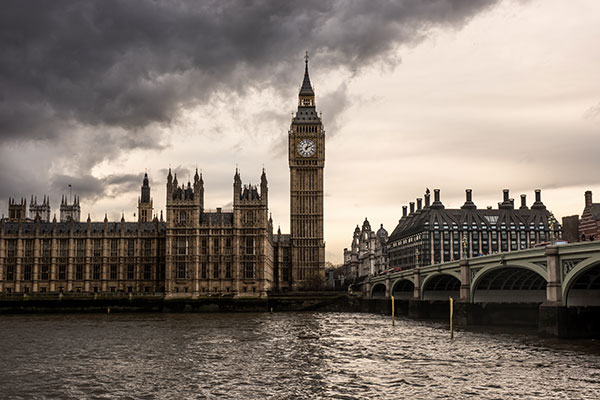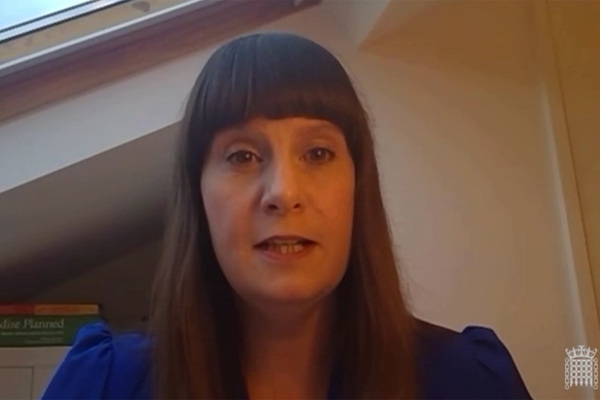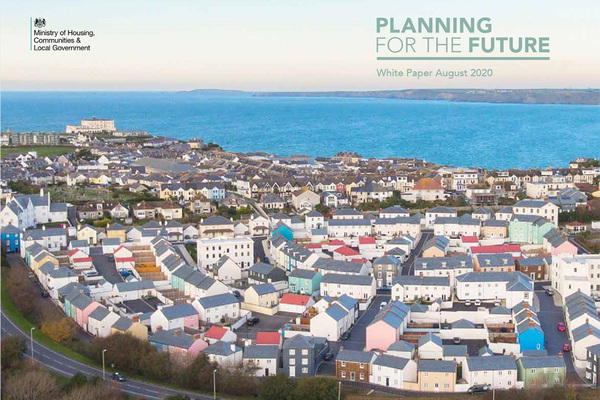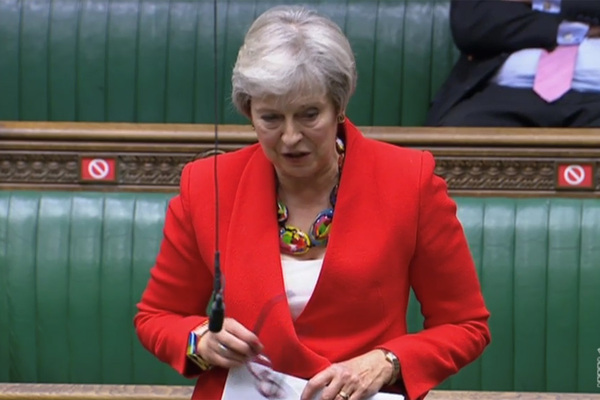Can the Planning White Paper deliver affordable, beautiful or sustainable homes?
Proposals in the Planning White Paper, aimed at simplifying the system and making land more available, are discussed by a panel of experts at an Inside Housing roundtable, in association with H+H. Illustration by Neil Webb
In association with:

In debating an issue as complex, controversial and critical as how to enable a significant increase in the number of homes while ensuring sustainability and beauty, it can be difficult to know quite where to start.
Martin Hilditch, editor of Inside Housing, decides to keep it simple – electing to begin with a ‘yes/no’ question. He asks the 15 panellists who have gathered for a roundtable debate whether they consider the government’s new Planning White Paper – which proposes a fundamental overhaul to the planning system with a view to creating sustainable and beautiful buildings – to be fit for purpose.
The result of the straw poll is obvious more or less immediately. Not one person has raised his or her hand. Clearly there is a lot to debate at this event, organised in association with H+H.
What does the future look like?
It was in August that the Ministry of Housing, Communities and Local Government issued Planning for the Future, which sets out how it plans to reform the planning system in England. The prime minister’s foreword imagines a planning system which delivers “results in weeks and months, rather than years and decades”, and which “actively encourages sustainable, beautiful, safe and useful development rather than obstructing it”.
Among the suggested means of doing so include: central guidance to local authorities on how much housing must be delivered; councils using design codes to prescribe what is wanted from housing in their areas; the scrapping of the Section 106 planning agreement – the system under which 49% of affordable homes were delivered in 2018/19 – and its replacement with a nationally set infrastructure levy.
That is a lot of potential change. But to what end? As John Churchett, director of social housing and construction at H+H, asks: “Is it going to actually help us build more houses that are quality-driven, sustainable and will it help hit the 300,000 number [of homes] that is the magical figure everyone is talking about?”
Many around the virtual table contend that while the headline-grabbing words in the white paper are beauty and sustainability, the real aim lies in the figure mentioned by Mr Churchett.
“I think the white paper is unashamedly about pace of development and bringing development forward,” says Mike Shepherd, development and regeneration director at Vivid.
Wei Yang, incoming president of the Royal Town Planning Institute, strongly agrees. “The proposals in the white paper assume that the key solution to the housing crisis is to increase the number of housing permissions,” she says. “I think this is a rather narrow focus and this new housing delivery will undermine the benefit of planning reform.”
There is a central irony: a desire to fast-track planning may well make it harder to create beautiful and sustainable buildings. Jo Richardson, professor of housing and social inclusion at De Montfort University and vice-president of the Chartered Institute of Housing, suggests that speed and beauty may in fact be entirely incompatible.
“If you fast-track beauty, what you end up with is a facade. So the very premise of fast-tracking beauty is not the way forward.”
Indeed, many feel that the white paper risks putting excessive focus on the external look rather than the internal qualities of a planned home.
Rachel Ferguson, head of planning and design at L&Q, says: “Design is about more than location and external appearance. It’s got to be about access to space and appropriate quality in the interiors of the housing.”
Andrew Savage, executive director of development at Broadland Housing Association, agrees: “Design [in the white paper] doesn’t include internals. It seems to just include the external and the sustainability of that building which actually, internally, could mean we could drive to much smaller houses.”

A beautiful challenge
It brings the debate to a central theme: the sheer challenge of beauty.
“For every beautiful, well-thought-through development that I see out there across the past few decades, I see an equal number of uninspiring, poorly designed and under-performing equivalents that have all been deemed to be fit to be developed by one body or another at any point in time,” comments Tim Carey, national products director at Willmott Dixon.
Could part of the problem be that beauty is a subjective concept? It is, after all, in the eye of the beholder. And with the paper proposing that design codes should be developed by each council, it seems the relevant beholder will be local authorities.
For Tristan Samuels, director of regeneration at Portsmouth City Council, that is both an opportunity and a potential challenge. “We’re all vehemently agreeing that some level of local planning control is required both from a sustainability and a beauty perspective,” he says.
The problem, he adds, is that the mechanism by which it is proposed this will be achieved is unconvincing. “Design codes and a one-size-fits-all approach are just not going to work in terms of delivering those outputs.”
“My experience producing design guides is that it takes a year, and is a really hard, intensive process,” says Jack Ostrofsky, head of quality and design (development) at Southern Housing Group.
He expresses concern that – given planning departments have been serially under-resourced and often under-valued in recent years – the capability to complete that very complicated task may not consistently exist in local authorities.
In numbers
300k
Yearly target for new homes to meet demand
49%
Proportion of social homes delivered under Section 106 in 2018/19
Helen Moore, managing director of Orbit – the new build arm of the housing association, echoes and reinforces the point. “If you want to go down anything like this route, there’s going to have to be a significant amount more investment into the planning teams, into the specialists that support those planning teams, so that you can actually move at any form of pace,” she says. “I think that’s a reality that needs to be thought about.”
And it is not as if planning departments have previously had a stated aim of intentionally ugly and environmentally unfriendly properties.
“Beauty and sustainability are the most difficult concepts that planning have tried to deal with for many, many years,” argues Peter Matthew, executive director – housing, planning and communities for the London Borough of Hounslow. “They’re difficult because they’re subjective and they’re complex.”
How might it be made easier? For Claire Flowers, head of housing development at Cambridge City Council, getting it right involves conversations with communities.
She and many others around the virtual table are concerned that is something for which the white paper does not sufficiently allow. The worry is that the proposed reforms may make it harder for local people, particularly the digitally excluded, to comment on plans.
“On a site-by-site basis, you need to go and talk to the communities,” suggests Ms Flowers. “You need to listen to them and understand what’s important. You might not take everything on board, but actually, if you listen to those communities, you can actually get a better development.”
Hakeem Osinaike, director of housing at Brent Council, agrees that the relevant beholders of beauty are those who live in an area of planned development.
“For example, when we’re discussing regeneration with people who live on an estate, they basically give us a design code,” he says.
“We have this debate among planners, architects and local residents, and from that you get a design for the area that people who live there and might live there in future accept and sign up to. I think there is some richness there that shouldn’t just be waved away.”
Is Section 106 useful?
Something which is explicitly going to be waved away should the proposals become reality is Section 106 planning agreements, under which developers have to set aside a certain number of homes in a project to be affordable housing.
For some panellists, this is cause for significant concern. As Barbara Brownlee, managing director of Westminster Builds, the council’s development company, puts it: “If you remove Section 106, what is our mechanism for delivering any affordable housing?”
Mr Matthew is blunter. “The idea that doing away with a formalised policy on affordable housing and leaving it down to infrastructure levy negotiations will lead to net additional affordable housing is farcical.”
Which is not to say that panelists feel Section 106 is a faultless system. “Section 106 has delivered a lot of good affordable housing, and it’s delivered a lot of bad affordable housing, too,” argues David Orr, associate director for housing at the Centre for Ageing Better. “We need to be quite careful that we don’t cling on to suboptimal systems because they appear to be better than what might be presaged by the planning discussion that we’ve got now.”
Indeed, Mr Orr believes the failing of the white paper – aside from it not actually being a white paper, he notes wryly, “because it doesn’t have a command number and it’s not yet been to parliament” – is an excessive focus on mechanisms at the expense of a coherent vision.
“There is not really anything in the so-called white paper about what government’s objective is, what the long-term strategy is. If what we’re talking about is plan-led development, then the plan has to be more than just about the technical details of individual properties.”
It has instead to be about planning in its widest and purest sense: not merely a series of technical processes, but a conversation which involves a broad range of participants and a sense of place.
“I do support we need a reform for the current planning system because we can see there are all sorts of issues,” concludes Ms Yang. “But I think one key message we have to get out is planning is an essential public service – it's as important as the NHS to our society.”
Participants
Martin Hilditch (chair)
Editor, Inside Housing
Barbara Brownlee
Managing director, Westminster Builds
Tim Carey
National products director, Willmott Dixon
John Churchett
Director of social housing and construction, H+H
Rachel Ferguson
Head of planning and design, L&Q
Claire Flowers
Head of housing development, Cambridge City Council
Peter Matthew
Executive director – housing, planning and communities, London Borough of Hounslow
Helen Moore
Managing director, Orbit Homes
David Orr
Associate director for housing, Centre for Ageing Better
Hakeem Osinaike
Director of housing, Brent Council
Jack Ostrofsky
Head of quality and design (development), Southern Housing Group
Jo Richardson
Professor of housing and social inclusion, De Montfort University
Tristan Samuels
Director of regeneration, Portsmouth City Council
Andrew Savage
Executive director of development, Broadland Housing Group
Mike Shepherd
Development and regeneration director, Vivid
Wei Yang
Incoming president, Royal Town Planning Institute














